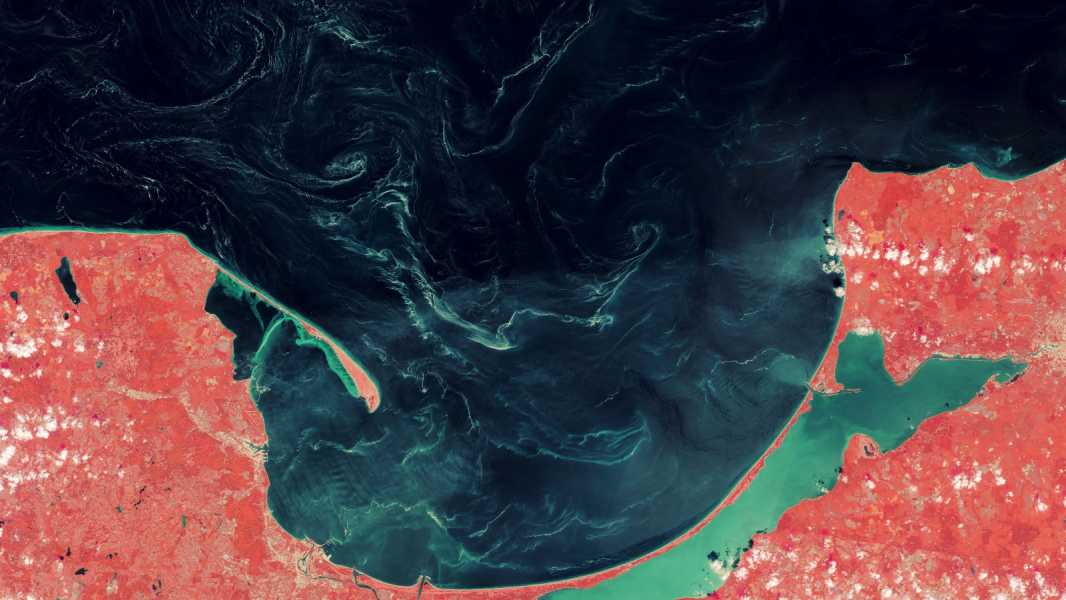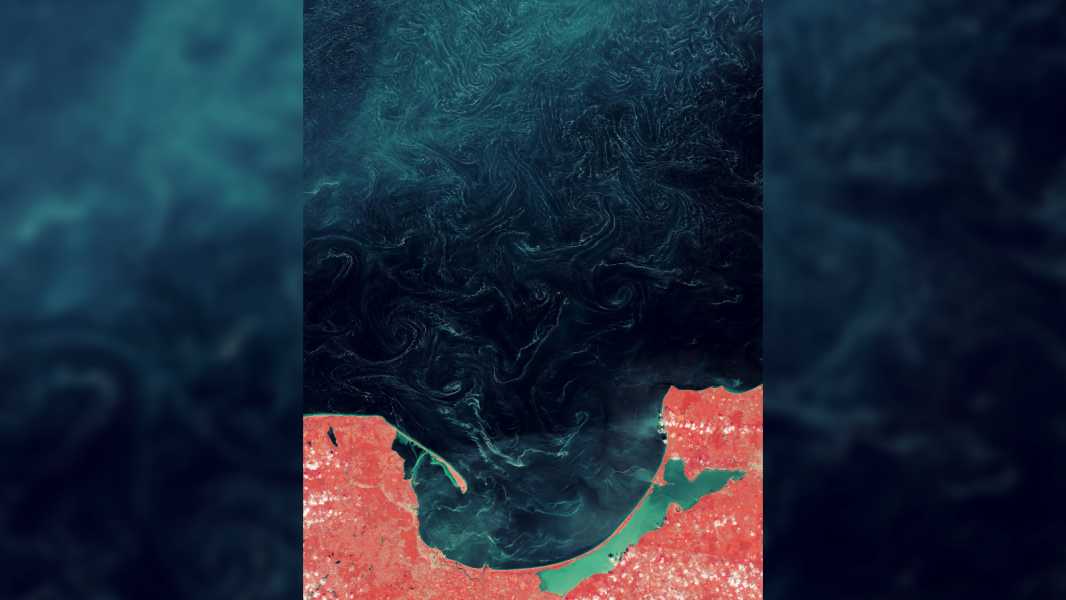
This false-colour satellite image shows swirling films of organic material on the surface of the Gulf of Gdansk taken in 2018. Scientists were only able to identify them five years later. (Image credit: ESA/Copernicus)
This stunning false-colour satellite image shows masses of organic material swirling along the Polish coast. When the photo was taken, the composition of these huge swirls was unknown, but astonishing research has since revealed their nature.
In 2000, satellite images revealed the presence of previously unknown, almost invisible films of organic material, or “spots,” that periodically formed on the ocean surface in and around Gdansk Bay, a part of the Baltic Sea surrounding the city of Gdansk in northern Poland.
The most dramatic example of this curious phenomenon occurred in May 2018, when vortices reached more than 130 miles (210 kilometers) off the coast, according to NASA Earth Observatory. Photos of the event (above and below) were modified to highlight the wavelengths of light coming from the mysterious substance, which also gives the land around Gdansk a reddish tint.
Initially, scientists could not determine what the patches were made of. They formed patterns similar to blooms of photosynthetic algae that are swirled across the ocean surface by wind and currents. However, such blooms are usually clearly visible to the naked eye in most satellite images and often occur months before the patches continue to appear.
Some researchers later suggested that the material might have been “sea snot,” a slippery substance produced by some planktonic organisms that can stick to boats and shores. However, locals have never reported outbreaks of sea snot in the region.

The 2018 spots extended more than 130 miles (210 km) from the coastline.
However, during a study of the spots in 2023, scientists finally discovered what they were made of: tree pollen.
Using data collected by NASA's Terra and Aqua satellites, the research team found that similar patches appeared 14 times between 2000 and 2001. The timing of these patches, which often occur between May and June, coincided with the pollen cycle of pine trees (Pinus sylvestris), suggesting that tree pollen was carried by the wind out to sea and deposited on the surface.
Further analysis of the light reflected from the spots confirmed this hypothesis.
Ocean Pollen
According to information from the State Forests of Pol
Sourse: www.livescience.com





